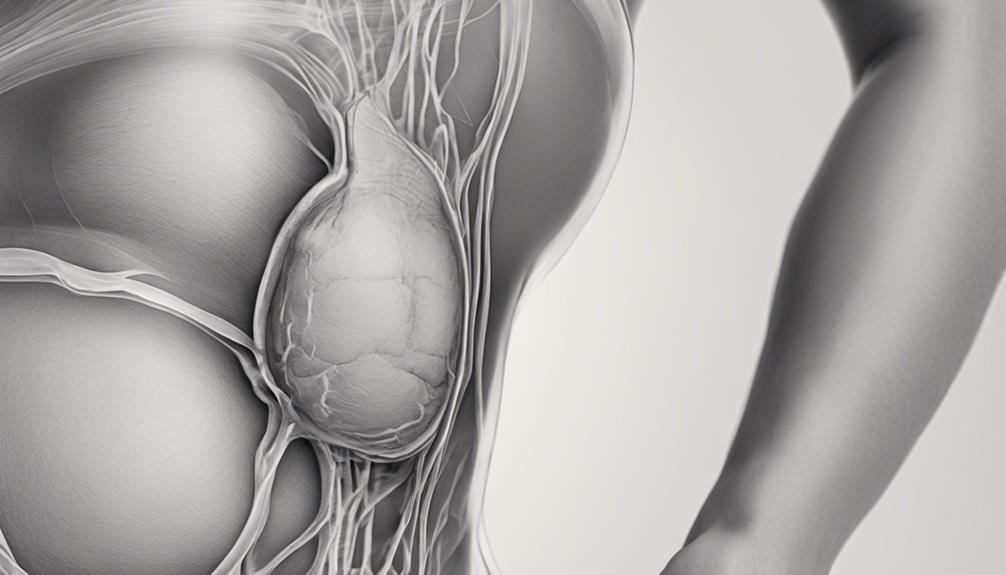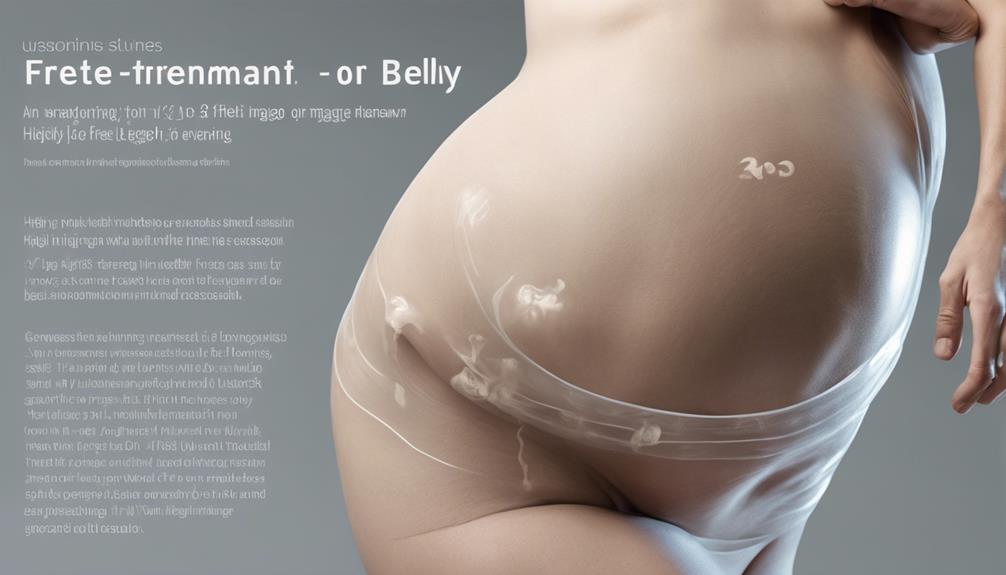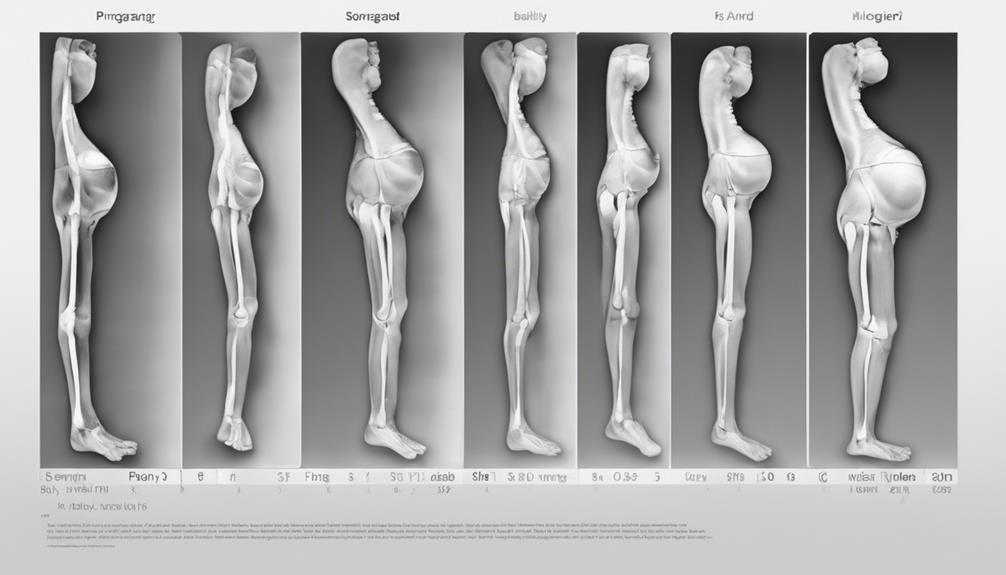Reflecting on the importance of a short femoral length in the third trimester of pregnancy, we encounter an essential inquiry: at what point does worry trigger the need for intervention?
The intricacies surrounding this topic are multifaceted, requiring a nuanced understanding to navigate the complexities of fetal development and potential implications of deviations from the norm.
Let's explore the nuances of this issue, shedding light on when heightened vigilance may be warranted for the well-being of both the mother and baby.
Key Takeaways
- Short femur length in the third trimester signals risks of IUGR and genetic abnormalities.
- Increased likelihood of being small for gestational age (SGA) is associated with short femur length.
- Intensive sonographic surveillance is essential for monitoring and managing the condition.
- Genetic testing and detailed organ screening help in ruling out chromosomal abnormalities and supporting fetal growth.
Potential Implications of Short Femur Length
When we encounter short femur length in the third trimester of pregnancy, it plays an important role as an indicator of potential intrauterine growth restriction (IUGR) or other fetal abnormalities. This measurement can indicate an increased risk of preterm birth or low birth weight for the baby.
Understanding the implications of short femur length prompts clinicians to contemplate genetic testing and detailed organ screening to assess potential complications thoroughly. Maternal factors such as height, BMI, and birth weight, along with paternal factors, play a critical role in influencing the medical conditions associated with a short femur in the fetus.
Hence, it becomes essential to engage in intense sonographic surveillance for ongoing monitoring and management of evolving complications in cases of short femur length in the third trimester.
Risks Associated With Short Femur Length

Short femur length in the third trimester signals heightened risks of intrauterine growth restriction (IUGR) and potential genetic abnormalities in the developing fetus. Fetuses with a short femur are at a higher risk of being small for gestational age (SGA) and may have a low birth weight.
Genetic testing is essential in cases where additional structural abnormalities accompany a short femur length to identify potential genetic issues. Complications such as preterm birth are more prevalent in fetuses with a short femur and other abnormalities.
It's vital to undertake intense sonographic surveillance for cases of short femur length in the third trimester to monitor for evolving complications or uncertainties. By closely monitoring these pregnancies, healthcare providers can better assess and manage the risks associated with short femur length, ensuring the best possible outcomes for both the mother and the developing fetus.
Diagnostic Evaluation for Short Femur Length
In pregnancies where short femur length raises concerns about intrauterine growth restriction and genetic abnormalities, the diagnostic evaluation process in the third trimester typically involves detailed ultrasound assessments to ascertain measurement accuracy.
Additional tests like genetic testing or amniocentesis may be recommended to rule out chromosomal abnormalities or skeletal dysplasias in cases of persistent short femur length.
Uterine artery Doppler evaluation can be used as a risk assessment tool to determine the likelihood of complications associated with short femur length.
Statistical analysis, such as expressing femur length deviation as a z-score and conducting comparisons using appropriate tests like the Kruskal-Wallis test, aids in the assessment of fetal growth and development.
Counseling parents of fetuses with short femur length in the third trimester should include discussions on the prognosis, potential complications like severe intrauterine growth restriction, and the need for close monitoring and follow-up care.
Management Strategies for Short Femur Length

Collaborating with a multidisciplinary team, including maternal-fetal medicine specialists and genetic counselors, enhances the effectiveness of management strategies for pregnancies with concerns regarding short femur length in the third trimester. Management often involves close monitoring through additional ultrasounds and growth scans to track fetal development and detect any potential issues promptly. Consulting with a maternal-fetal medicine specialist or perinatologist is essential for a complete evaluation and tailored management plan.
Genetic counseling plays a significant role in ruling out chromosomal abnormalities or genetic conditions associated with short femur length, providing vital information for decision-making. In cases where intrauterine growth restriction (IUGR) is suspected, obstetricians may recommend interventions to support best fetal growth and well-being.
Monitoring and Follow-Up for Short Femur Length
Regular monitoring and follow-up of fetal growth, including consistent ultrasound assessments, are essential components in evaluating the progression of short femur length during the third trimester of pregnancy. It's important to stay proactive and engaged in the management of pregnancies with short femur length to guarantee the well-being of both the mother and the fetus.
Here are key steps to take into account:
- Consultation with healthcare providers: Discuss any concerns regarding short femur length and determine the necessity for further assessments or interventions.
- Thorough evaluation: Alongside short femur length, closely observe other biometric measurements and growth restriction markers for a holistic view of fetal health.
- Multidisciplinary collaboration: Work with obstetricians, perinatologists, and genetic counselors to tailor a management plan that suits the specific needs of pregnancies with short femur length in the third trimester.
Through timely communication with the healthcare team and adherence to recommended follow-up schedules, anxiety can be alleviated, and appropriate measures can be taken to address any issues related to short femur length.
Frequently Asked Questions
What Is Considered a Short Femur Length in the Third Trimester?
A short femur length in the third trimester is below the 5th percentile on a growth scan, raising concerns. Further evaluation by a doctor is advisable. Trusting medical advice and previous reassuring scans can help alleviate unnecessary stress.
When Should I Be Concerned About My Femur Length?
When it comes to femur length concerns, trust healthcare providers for accurate assessments. Avoid unnecessary stress over minor discrepancies. Remember, individual experiences vary. Positive outcomes and normal development are possible despite worries about short femur length in late pregnancy.
Why Is My Baby's Femur Measuring Small?
It is important to note that a small femur measurement in the third trimester can result from various factors like fetal position or growth patterns. It's crucial to consult healthcare providers for accurate assessment and guidance.
What Femur Length Is Down Syndrome?
We comprehend the concern about femur length and Down Syndrome. Remember, short femur length alone doesn't diagnose Down Syndrome. Genetic testing is key for accurate assessment. Trust healthcare providers for guidance on proper screening and support.
Conclusion
To sum up, monitoring short femur length in the third trimester of pregnancy is vital for identifying potential issues and ensuring the health of both the mother and baby.
Like a compass guiding us through uncharted waters, regular evaluations and communication with healthcare providers can help navigate any concerns and provide necessary support.
Trusting in the expertise of medical professionals and staying informed can lead to better outcomes and peace of mind during this critical stage of pregnancy.









